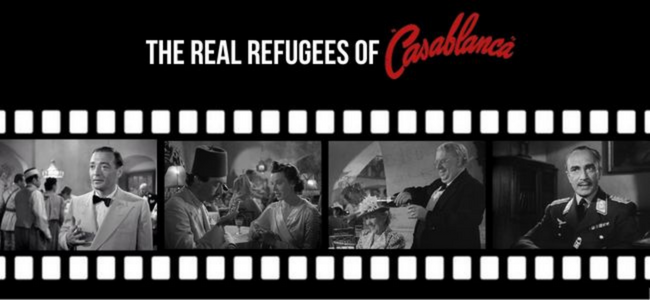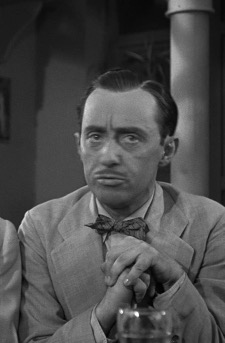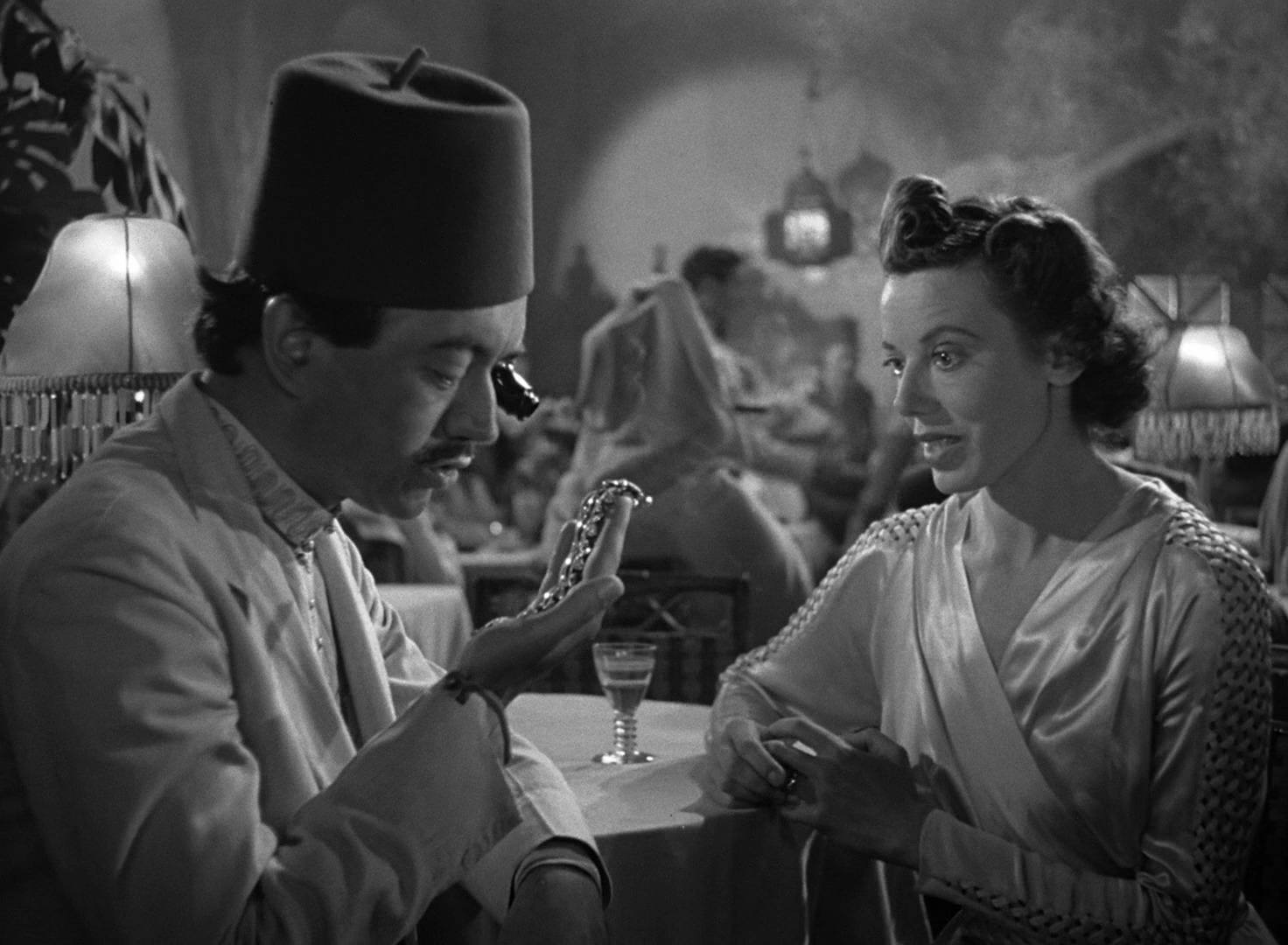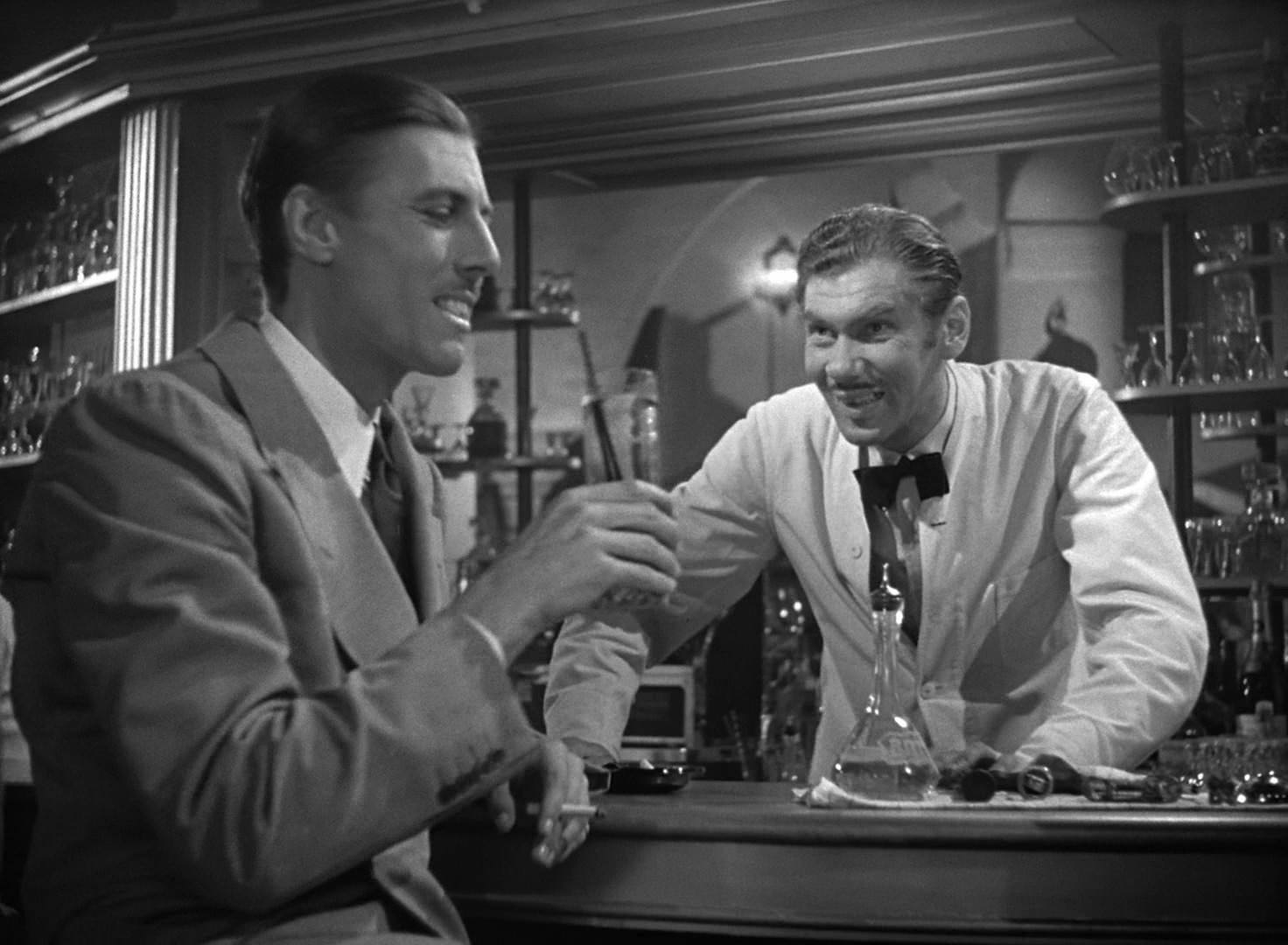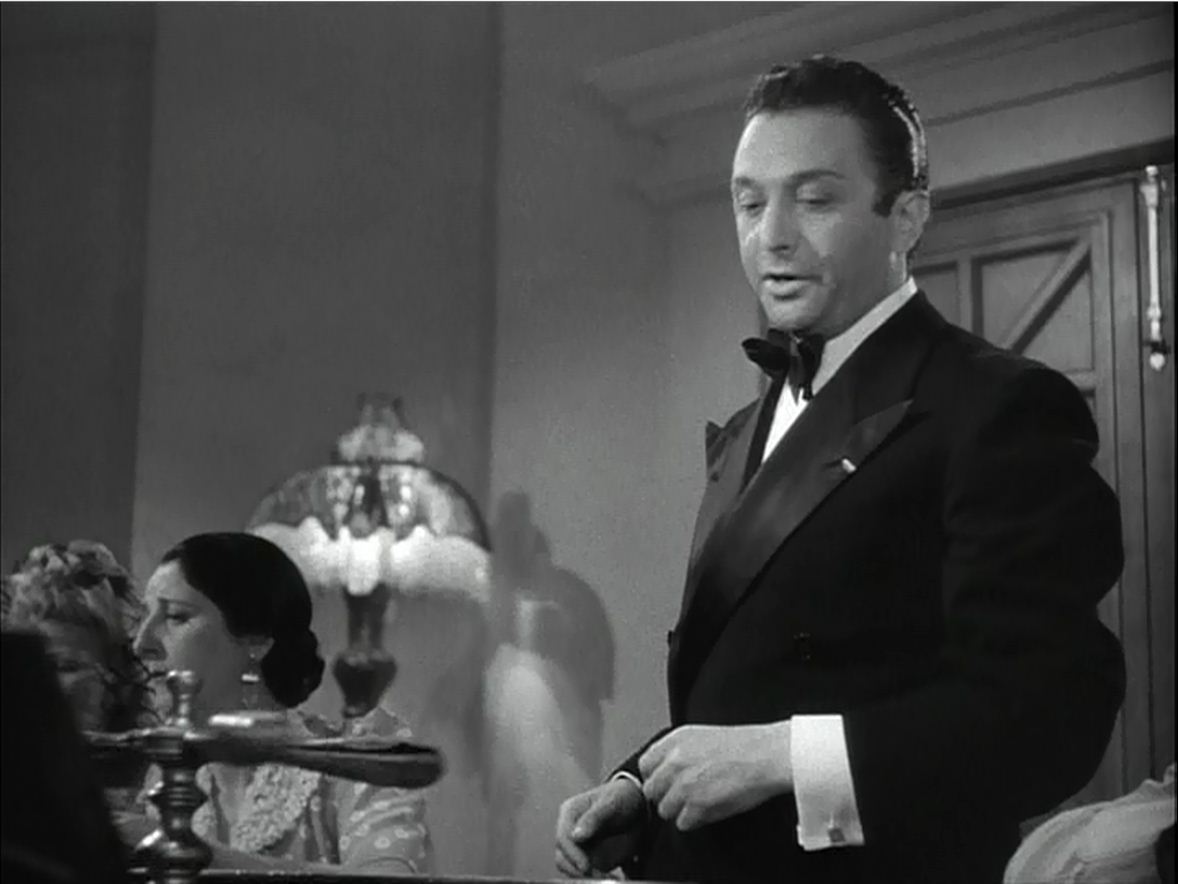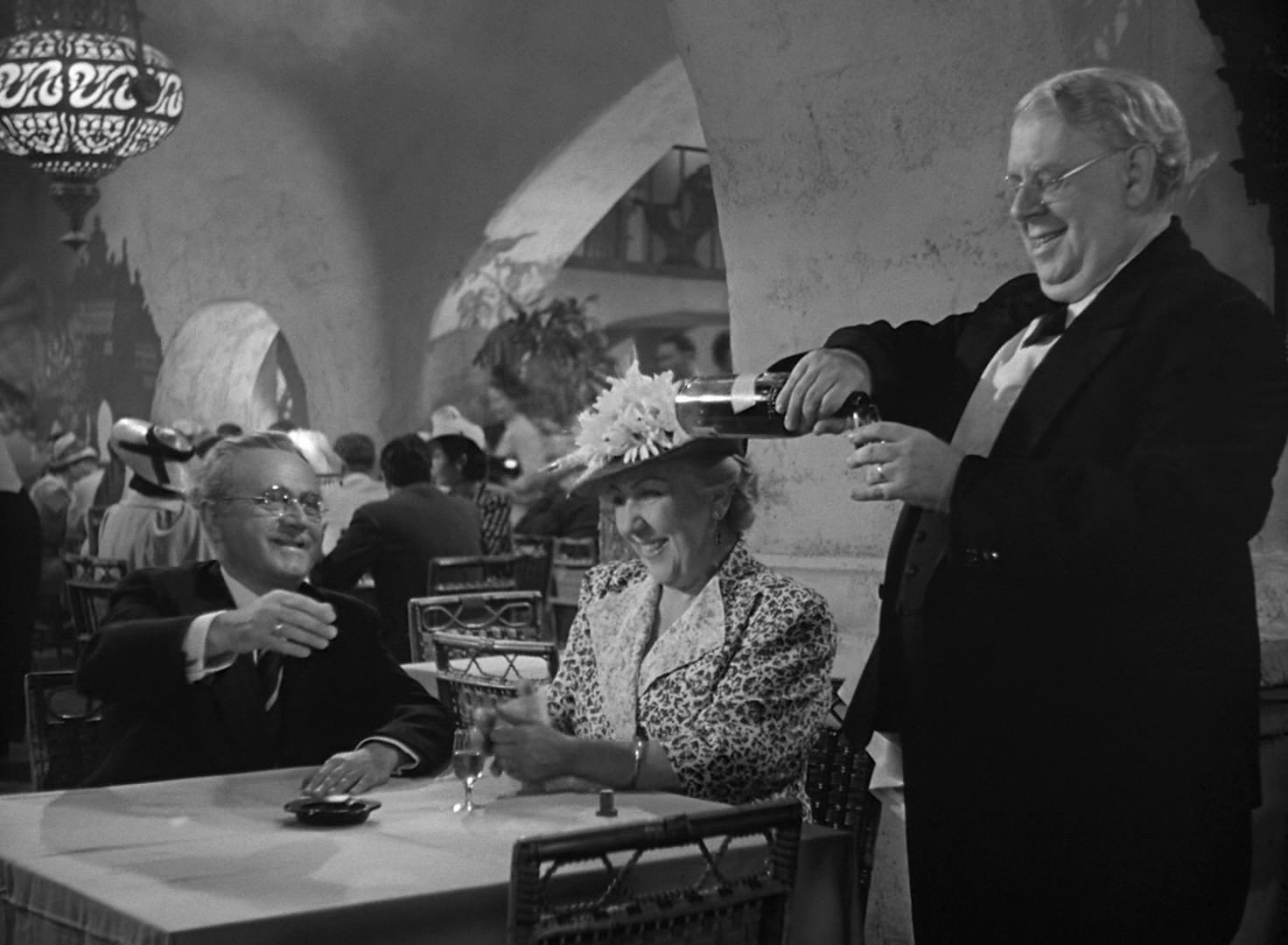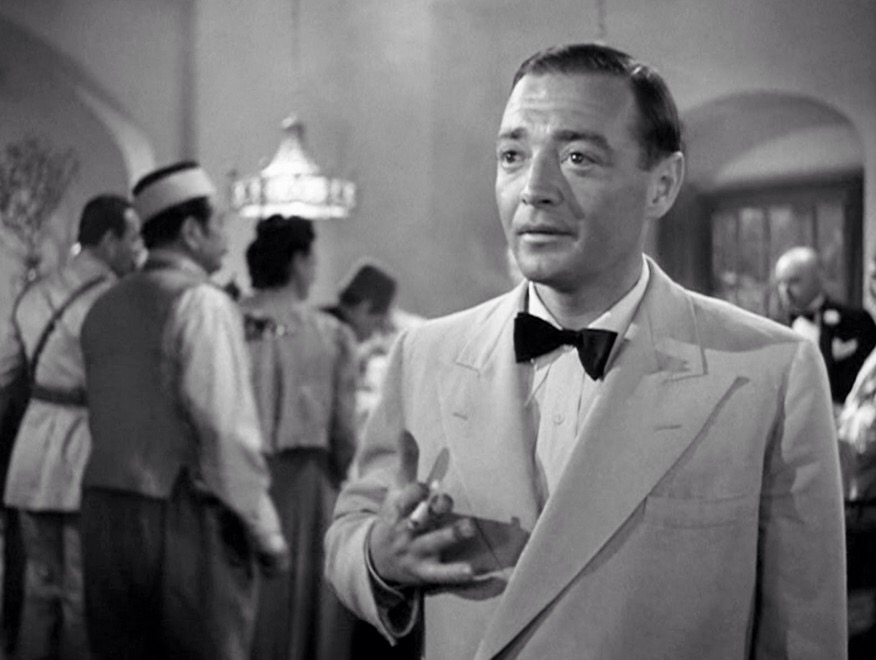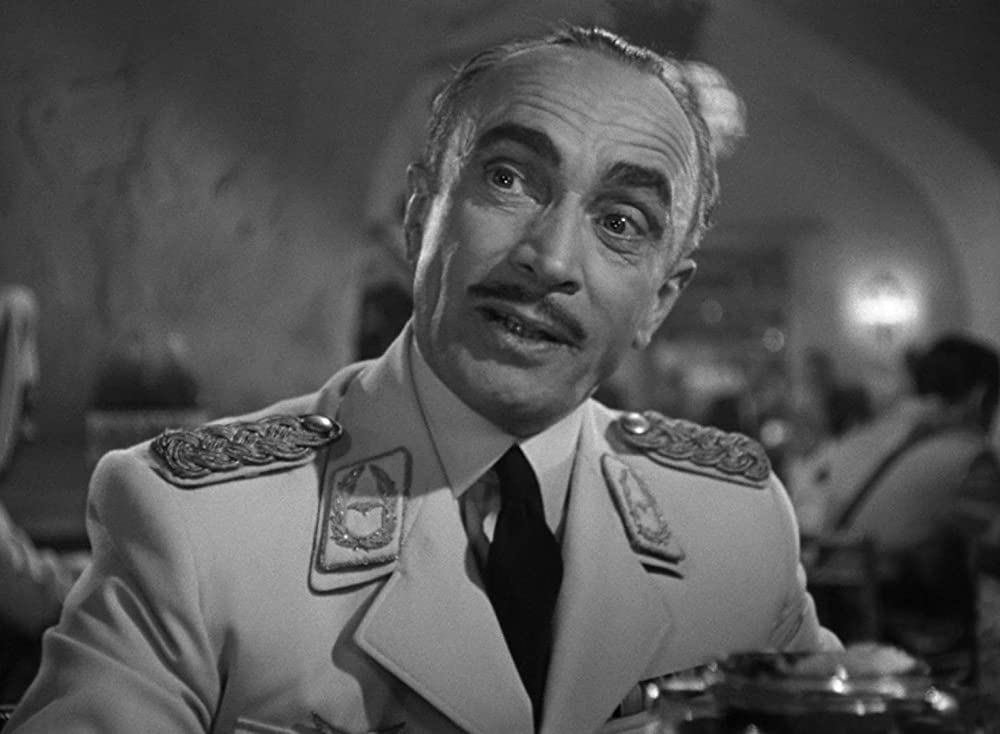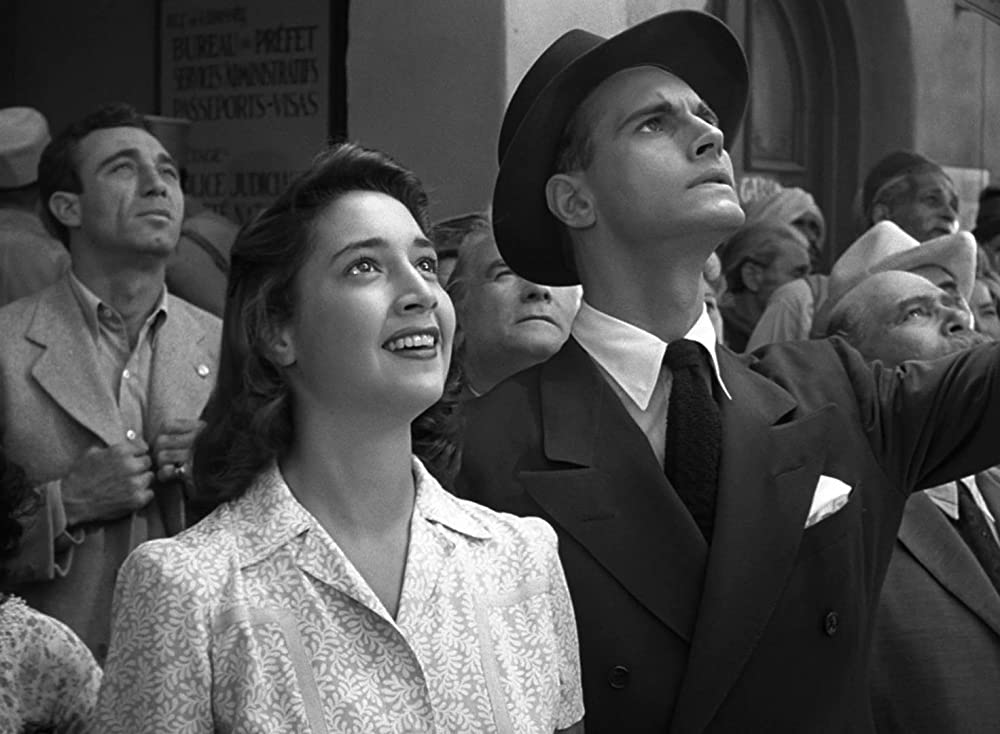January 23, 2023 marks 80 years since the release of the Hollywood classic Casablanca. The movie was released in 1943, a year after the United States joined WWII.
Moviegoers were enthralled by the film’s love story: Humphrey Bogart stars as the cynical owner of Rick’s Cafe, a nightspot in Morocco. Ingrid Bergman is his old flame Ilsa, now married to Victor Lazlo, a dashing resistance leader who is being hunted by the Nazis. However, Casablanca isn’t just a love story – it’s also a refugee story. What most viewers didn’t know at the time was that many of the actors playing refugees in the film were, in fact, refugees themselves.
Helmut Dantine was one such actor. Born in Austria, he spent his teenage years leading the anti-Nazi youth movement in Vienna, and was ultimately arrested when the Nazis annexed Austria in 1938. In Casablanca, he plays Jan Brandel, a young refugee who has fled Europe with his wife.
Humphrey Bogart and Helmut Dantine at the roulette table in Casablanca.
“When people speak here, the accents are real,” says Leslie Epstein, the son and nephew of screenwriters Philip and Julius Epstein. “That gives it a kind of authenticity. In a sense, they’re playing themselves.”
The refugee actors added authenticity to roles on both sides of the war. German actor Conrad Veidt had to flee the Nazis with his Jewish wife. In Casablanca, he plays Nazi officer Major Strasser – and found success portraying Nazis on screen in several other films. The casting of real-life refugees exemplified Hollywood’s unique position at the time, as a safe harbor and a place of employment for European emigres, at least temporarily. The cast also authenticated Casablanca as both a love story and a film with a political message: that the war the U.S. had just entered was worth fighting.

